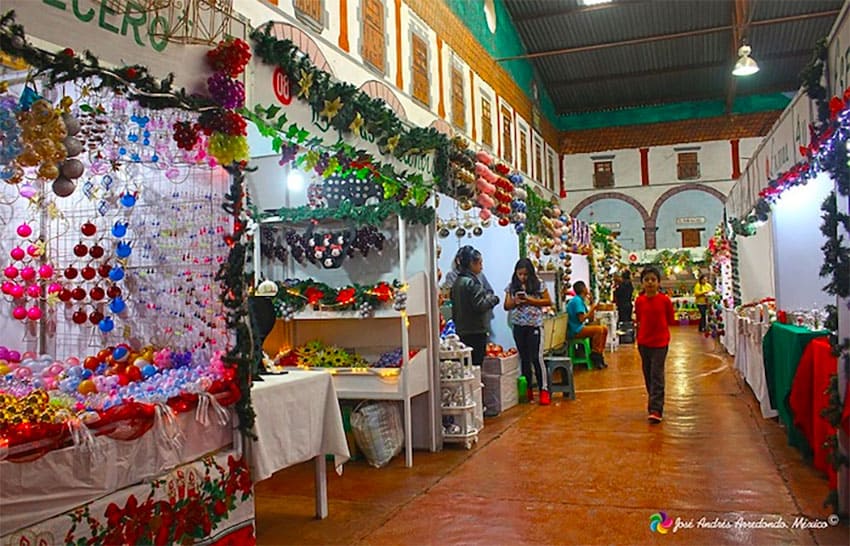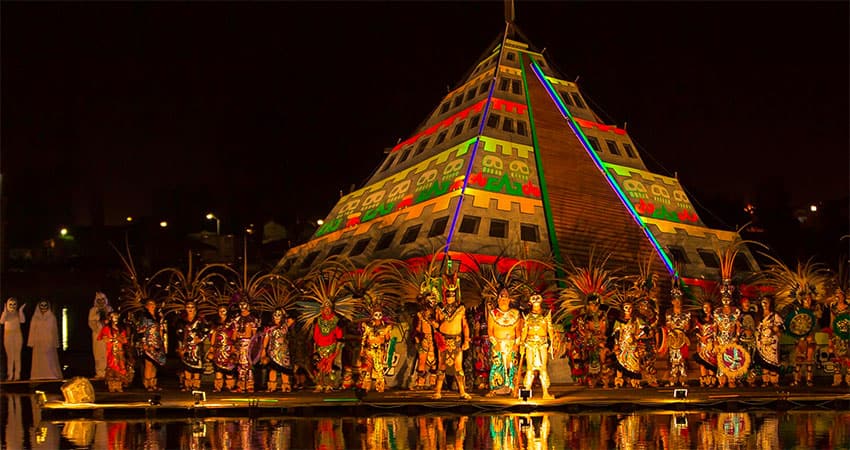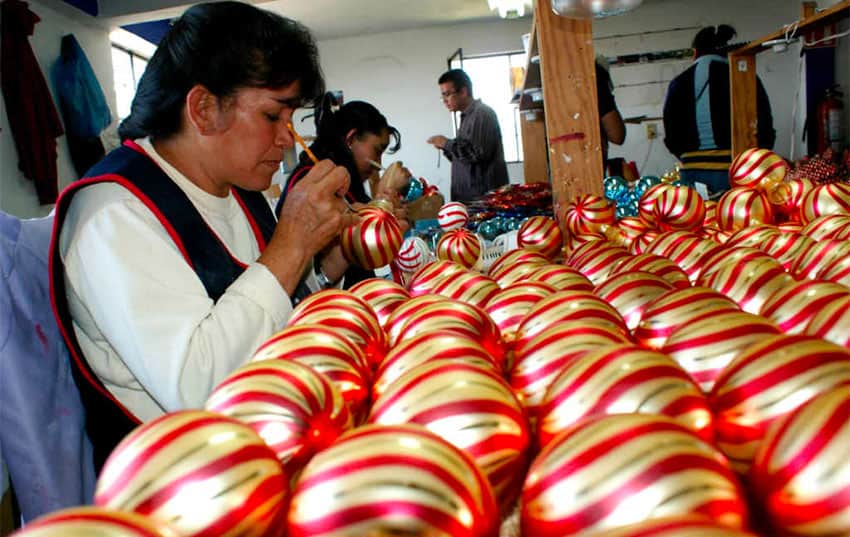There are two places in Mexico that are year-round Christmas towns and for good reason: their economies are based on the production of Christmas ornaments.
One is Tlalpujahua, Michoacán, a town that faced severe economic depression after the last mines closed in the area in the 1930s.
Some 20 years later, Joaquín Muñoz decided to leave Tlapujahua and migrate to the United States. He wound up in Chicago, working at a factory making artificial Christmas trees. He also learned about blown glass tree ornaments, neither of which was known in Mexico at the time.
In the 1960s, he returned to Mexico but there was still no work in Tlalpujahua so he went to Mexico City where he set up a workshop making artificial trees. The business went well enough but it began to take off when Muñoz added glass ornaments, which proved more popular than the trees themselves.
Muñoz returned to his hometown and moved his operations there, establishing Adornos Navideños, the largest business in town.

The glassblowing and painting techniques quickly spread among local families and today most of the population is involved in the making and selling of Christmas ornaments in some way. It is the main economic lifeline of the municipality, which exports ornaments and other decorations to the United States and other parts of the world.
It has also taken advantage of its location only three hours west of Mexico City to make itself a weekend tourist destination, billing itself as the “eternal Christmas town.” The year-round Christmas feel comes not only from ornaments for sale throughout the year, but also because of the area’s pine-covered mountains.
Even the town’s wooden houses with their tin roofs lend the right feel. The success of this promotion is due in no small part because it takes advantage of the monarch butterfly’s winter hibernation in the same region.
Each year Tlalpujahua hosts the Feria de la Esfera, or Ornaments Fair, which this year runs until December 15. The event brings thousands of visitors during the months before Christmas and the town can be packed on weekends. Booths are set up all over town, but the center of it all is the auditorium, where the widest variety of products can be found.
Most of the ornaments made here are still blown and painted by hand, and the fair offers demonstrations of the process. Some even allow visitors to participate in the making of their own ornaments.
But there is more to see than just ornaments in this Pueblo Mágico (Magical Town) of cobblestone streets, such as old mines offering tours and a colonial church.

One caveat, however. Along with the northern-like scenery, there are also northern-like winter conditions. Daytime temperatures can be comfortable (or not) but nights here can be cold.
Mexico’s other Christmas town is on the opposite side of Mexico City, three hours northeast in Pueblas Sierra Norte. Ornament making started in Chignahuapan about 30 years ago by a man named Rafael Méndez Núñez.
It is double the size of Tlalpujahua, but like its Michoacán neighbors, its economy is dominated by the making of blown glass ornaments for export. There are over 200 producers here, with the largest being El Castillo de la Esfera. Founded in 1993, it claims to be the largest producer in Mexico.
Chignahuapan earned its Pueblo Mágico status in 2012 but has a very different feel. The town plaza is dominated by a highly unusual and colorful kiosk of Moorish design. Just off the plaza is a church with the largest image of the Virgin Mary in the world at 12 meters high.
The climate is very rainy and somewhat chilly, but it does not get anywhere near as cold as the Michoacán mountains. The town is surrounded by fruit and coffee trees, along with waterfalls and hot springs for relaxation.
Chignahuapan also holds an annual fair to celebrate Christmas trees and ornaments but it ends in early November. But this does not mean that the town is out of ornaments afterwards. Visitors and vendors continue to crowd its streets through the month of December.

The bread and butter of both towns is the making of ornaments for export, and for that reason most of those sold here will be very nostalgic to people from north of the border. However, in its short history there has already been experimentation not only to create products different from those in the U.S. or those made in China.
There is also a subtle but noticeable difference between the ornaments and other decorations made in the two towns. Most of this focuses on the making and painting of blown glass. All kinds of motifs can be found on the spheres, even those related to Day of the Dead in Chignahuapan.
Both are working to make other blown shapes, such as stylized poinsettias and some not related to Christmas at all, such as artificial fruits (to make fruit bowls and other arrangements) and hot air balloon decorations. Both have also worked to create new ways to display ornaments, from mini-trees made of wire or wood to showcase one or a group of ornaments, to very interesting versions of Christmas wreaths made from willow branches, bamboo strips, wire, colored corn husks and more, decorated with ribbons and, of course, glass ornaments.
Mexico News Daily
